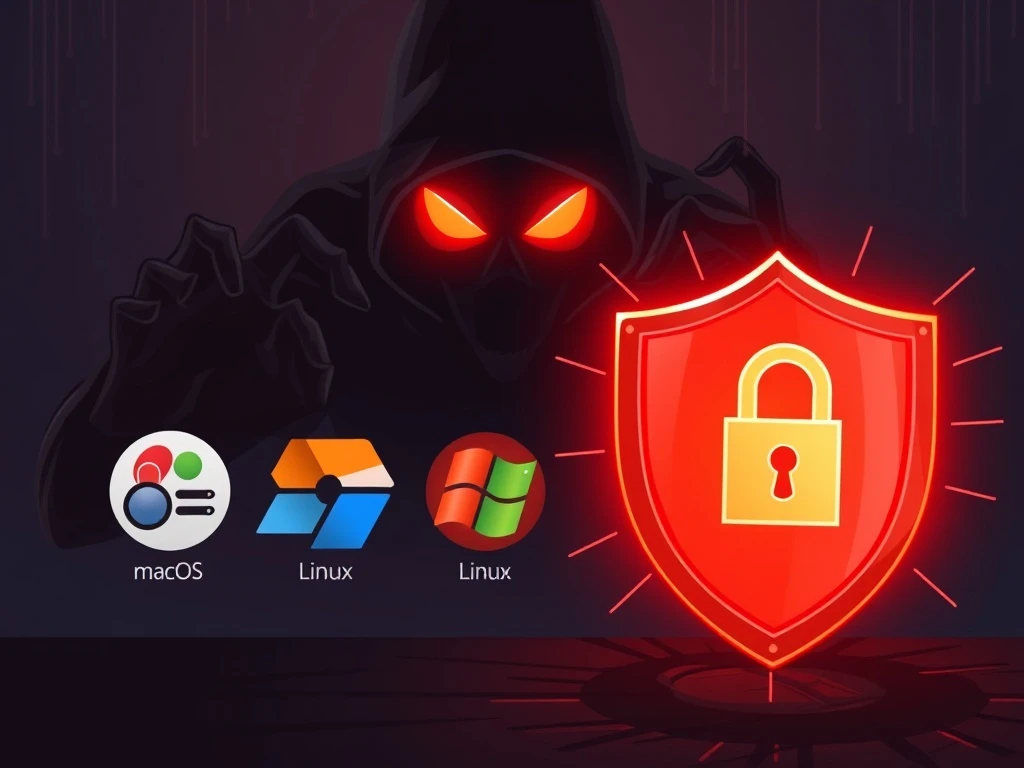Urgent Warning: ModStealer Malware Endangers Crypto Wallets Across All Major OS

The cryptocurrency world faces a new, insidious threat: **ModStealer malware**. This dangerous software targets **crypto wallets** across multiple operating systems, including macOS, Windows, and Linux. Consequently, users must prioritize robust security measures to safeguard their valuable digital assets. This article provides critical insights and actionable steps to defend against this evolving cyber danger.
Unveiling the ModStealer Malware Threat
A newly discovered threat, the **ModStealer malware**, is actively targeting crypto users. Security firm Mosyle uncovered this sophisticated malware. Interestingly, it remained completely undetected by major antivirus engines for nearly a month after its upload to VirusTotal. This highlights its stealth capabilities and the challenge it poses to conventional defenses.
ModStealer specifically extracts sensitive data. Its pre-loaded code targets various critical information, including:
- Private keys
- Certificates
- Credential files
- Browser-based wallet extensions
Researchers observed targeting logic for many wallets. This includes extensions on Safari and Chromium-based browsers. Therefore, a wide range of users are at risk.
Multi-Platform Attack: Enhancing Crypto Wallet Security
The reach of ModStealer malware extends across major operating systems. It threatens users on macOS, Windows, and Linux platforms alike. On macOS, for example, the malware establishes persistence by abusing system functions. It registers itself as a background agent, ensuring continuous operation.
Mosyle’s team identified the server hosting the malware in Finland. However, they believe the infrastructure routes through Germany. This tactic aims to mask the operators’ true origin. Such measures complicate efforts to trace and apprehend the cybercriminals. Hence, proactive **crypto wallet security** becomes even more crucial.
How ModStealer Spreads: Addressing Cybersecurity Threats
The primary distribution method for ModStealer involves fake job recruitment ads. This tactic has seen increasing use, particularly targeting Web3 developers and builders. Scammers lure unsuspecting individuals with fraudulent opportunities. Once users install the malicious package, ModStealer embeds itself into the system. It then operates silently in the background, performing several malicious actions:
- Capturing data from the clipboard
- Taking screenshots of user activity
- Executing remote commands
Stephen Ajayi, DApp and AI audit technical lead at Hacken, emphasized the rising prevalence of such campaigns. He noted that malicious recruitment often uses fraudulent “test tasks” as a malware delivery mechanism. These evolving **cybersecurity threats** demand heightened vigilance from all users, especially those in the crypto space.
Fortifying Your Digital Assets with Blockchain Security
To defend against threats like ModStealer, basic wallet hygiene and endpoint hardening are essential. Stephen Ajayi shared practical steps for users. First, always use hardware wallets for storing significant amounts of cryptocurrency. When confirming transactions, always verify the address on the device display. Check at least the first and last six characters before approval. This simple step prevents address-swapping attacks.
Furthermore, maintain a dedicated, locked-down browser profile. Alternatively, use a separate device exclusively for wallet activity. Only interact with trusted wallet extensions within this secure environment. For robust account protection, Ajayi recommended offline storage of seed phrases. Always enable multifactor authentication (MFA) on all accounts. Use FIDO2 passkeys whenever possible, as they offer superior security. These practices collectively strengthen your **blockchain security** posture.
Proactive Digital Asset Protection for Developers
Developers face unique risks due to their involvement in coding and project execution. Ajayi warned developers to take extra precautions. They must be wary when asked to download files or complete assessments from unknown sources. Developers should always validate the legitimacy of recruiters and associated domains. This prevents falling victim to sophisticated phishing attempts.
Ajayi advised requesting assignments via public repositories. Also, open any task exclusively in a disposable virtual machine. This isolated environment should contain no wallets, SSH keys, or password managers. Emphasizing the importance of compartmentalizing sensitive assets, Ajayi recommended a strict separation. Maintain a clear distinction between a development environment (the ‘dev box’) and a wallet environment (the ‘wallet box’). This strategy is vital for effective **digital asset protection**.
Conclusion: Vigilance is Key to Digital Asset Protection
The emergence of **ModStealer malware** underscores the constant evolution of **cybersecurity threats** in the crypto landscape. It highlights the urgent need for proactive measures across all operating systems. By implementing strong **crypto wallet security** practices and adhering to expert advice on **blockchain security**, users can significantly reduce their risk. Stay informed, remain vigilant, and prioritize the **digital asset protection** of your valuable cryptocurrencies. Your security depends on it.






